The craftsman Pete Merrett knows his market…I could not resist buying two sets of dice from him, three made of Whitby jet and three of antler, for my in-progress tabula set. Jet dice were found in Viking-age York, and antler is a common material. Where did a Mercian abbess get jet dice from? Perhaps they were a gift from a visitor?
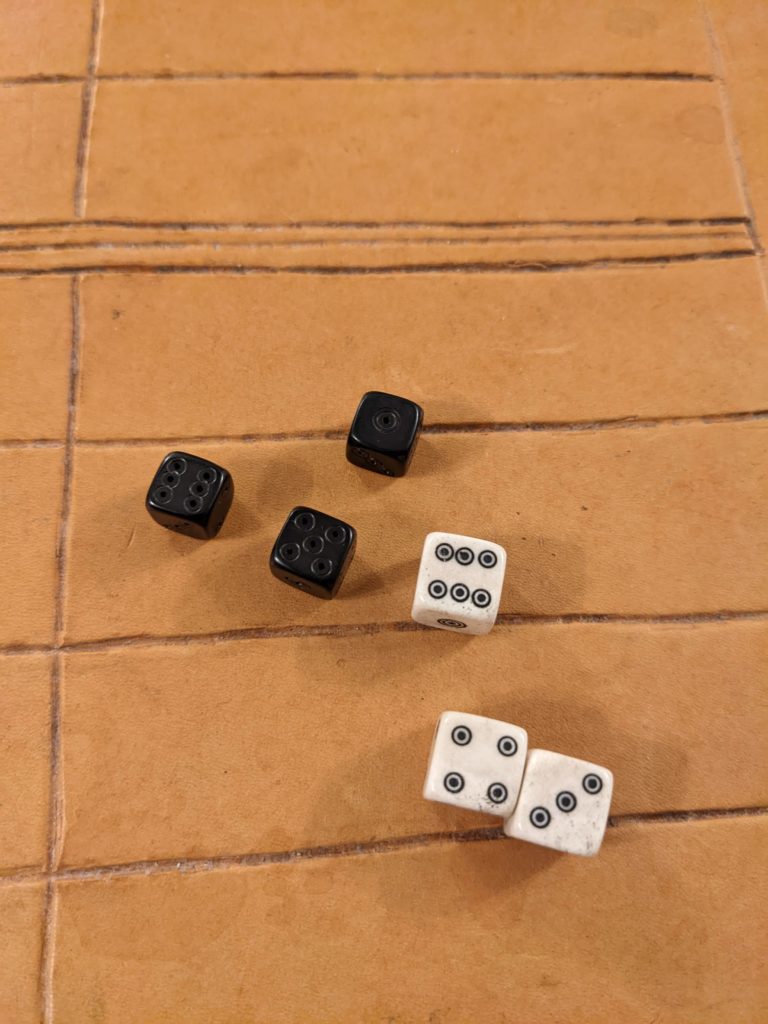
The dice are so nice! But then I got a bit carried away, and commissioned Pete to make me two sets of tablemen to go with them, carved of bone and antler in a nod to the Gloucester tabula set. So now I have SUPER posh dice and pieces. I just need a suitable board…I plan to make one of yew wood but for now, this simple leather board from my first set will do. It has the advantage of providing a soft surface on which to roll the jet dice which are more fragile than other materials, being essentially coal.
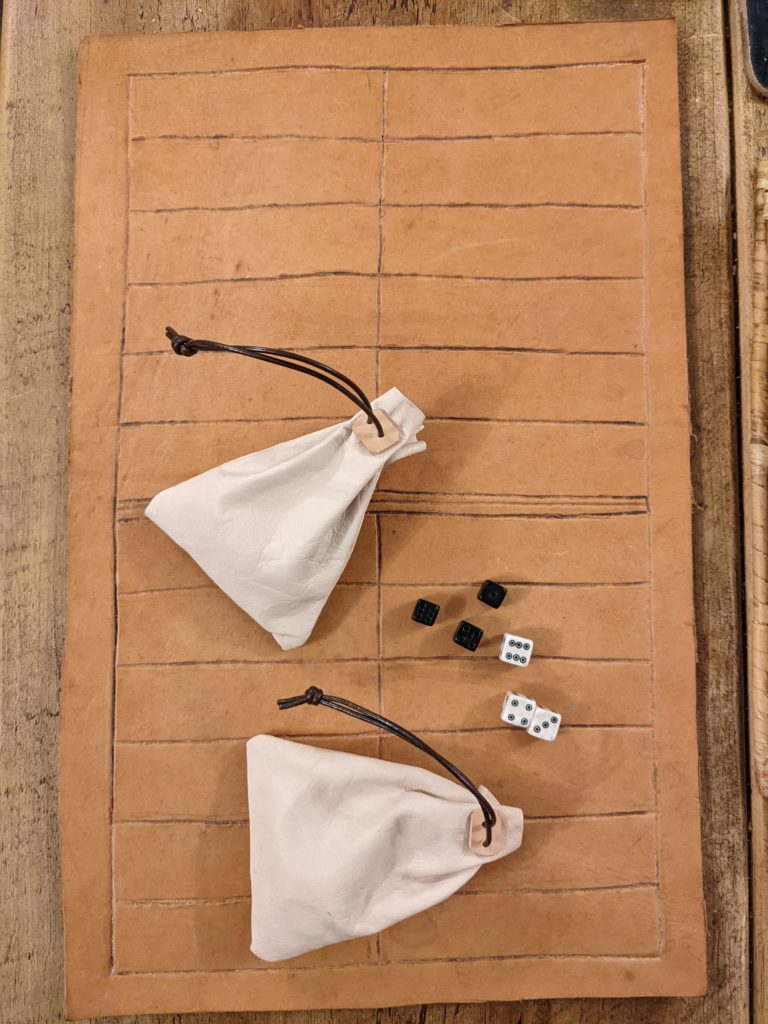
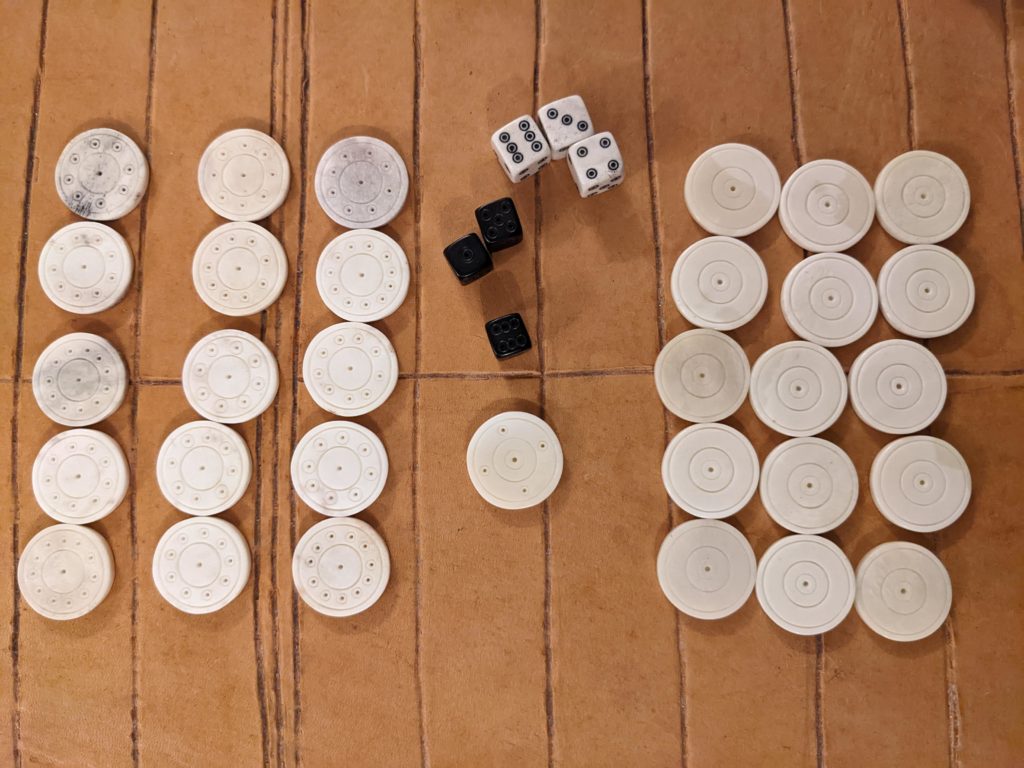
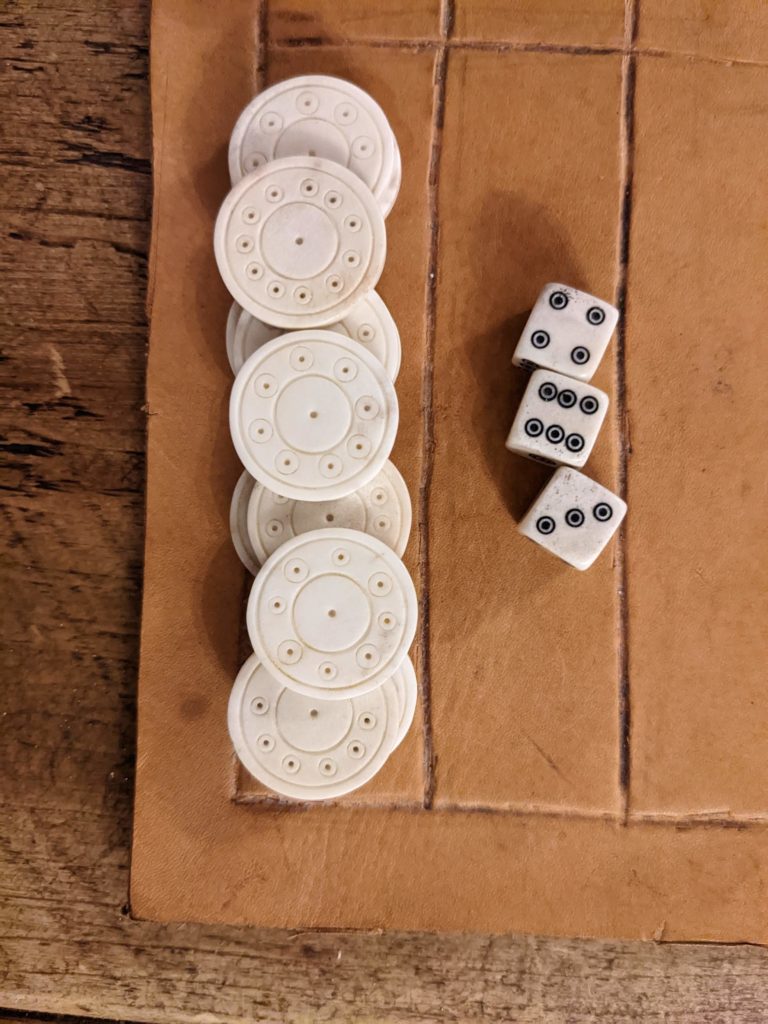
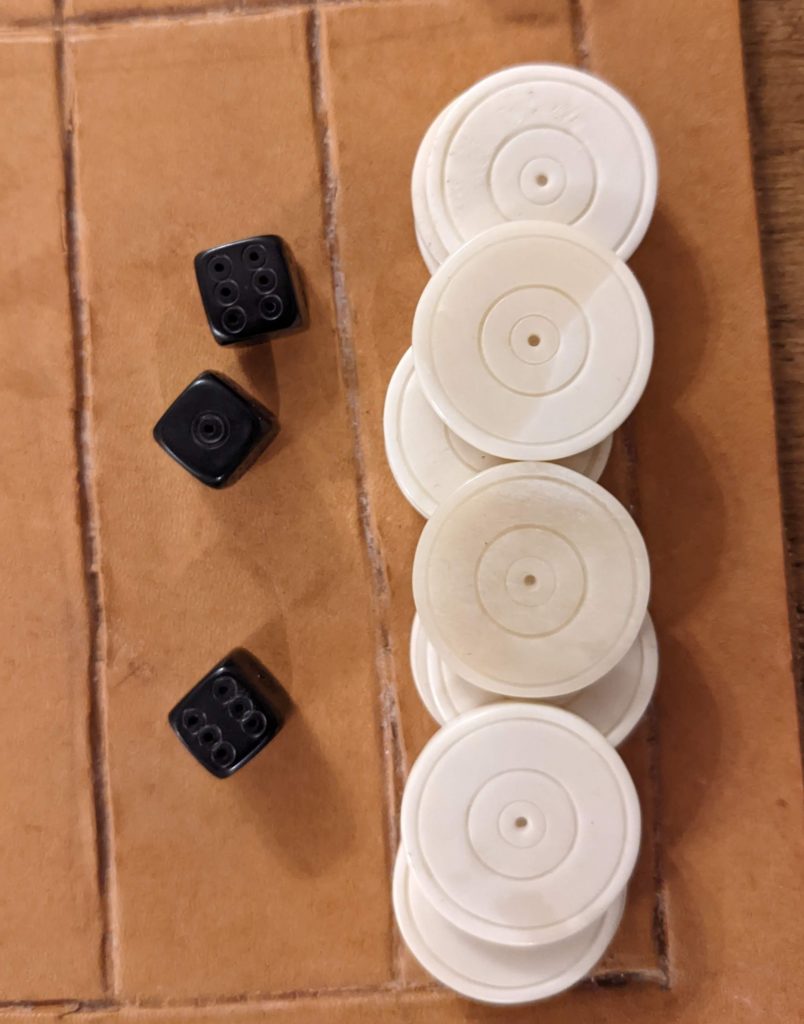
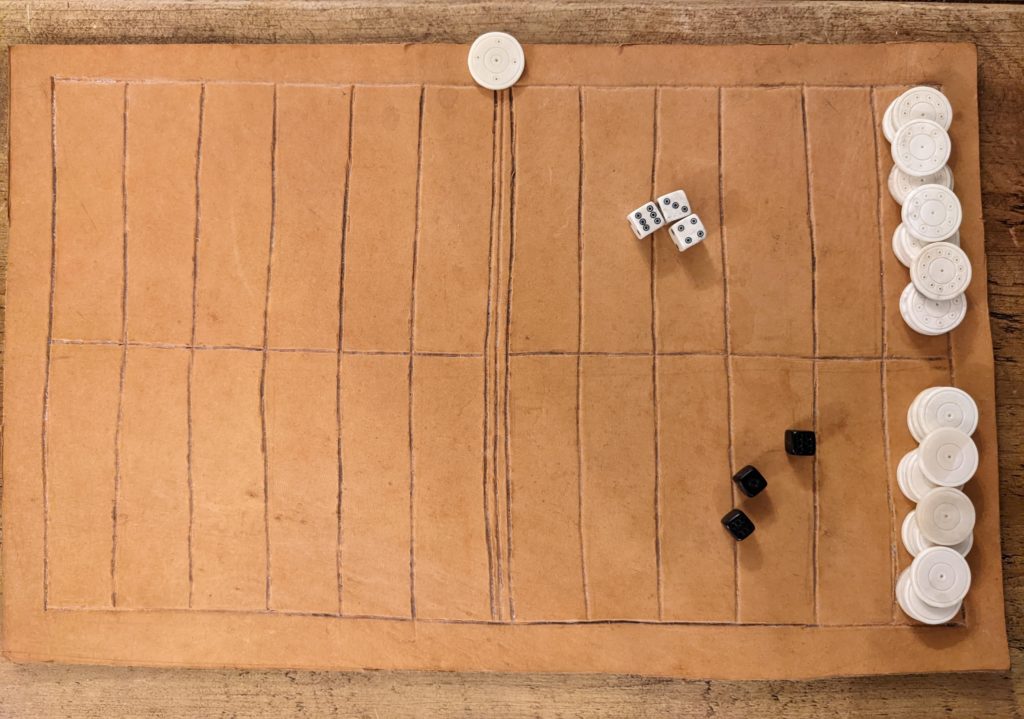
My pieces are about 22mm in diameter, half the size or less than many historic tabula pieces. My pieces are skilfully made but use less material, and the board is smaller, as befits a minor monastery of modest status.
The pieces demonstrate several “re-enactor reversals”; each piece was hand-carved and took about an hour to make, so they are significantly more expensive than the ostensibly fancier resin cast pieces one can buy on Etsy as replicas of higher status tablemen. I had to coax Pete into varying the design of the pieces, to match tabula pieces of similar design, with different numbers and spacing of ring and dot decoration, instead of making them perfectly symmetrical and identical as a modern person would do automatically. The medieval person sought skill and artistry, but not machine-like regularity.
Finally, the eagle-eyed will have noticed that the jet dice in their plain form are not easy to read, especially in poor light. A jet cross from Coppergate, York was inlaid with the yellow mineral orpiment, which is an arsenic compound. I picked white gouache paint instead; an early medieval person might have used white lead or a chalk mix. After some work with a fine brush and a damp tissue, my dice are now ready for play in a banquet hall!
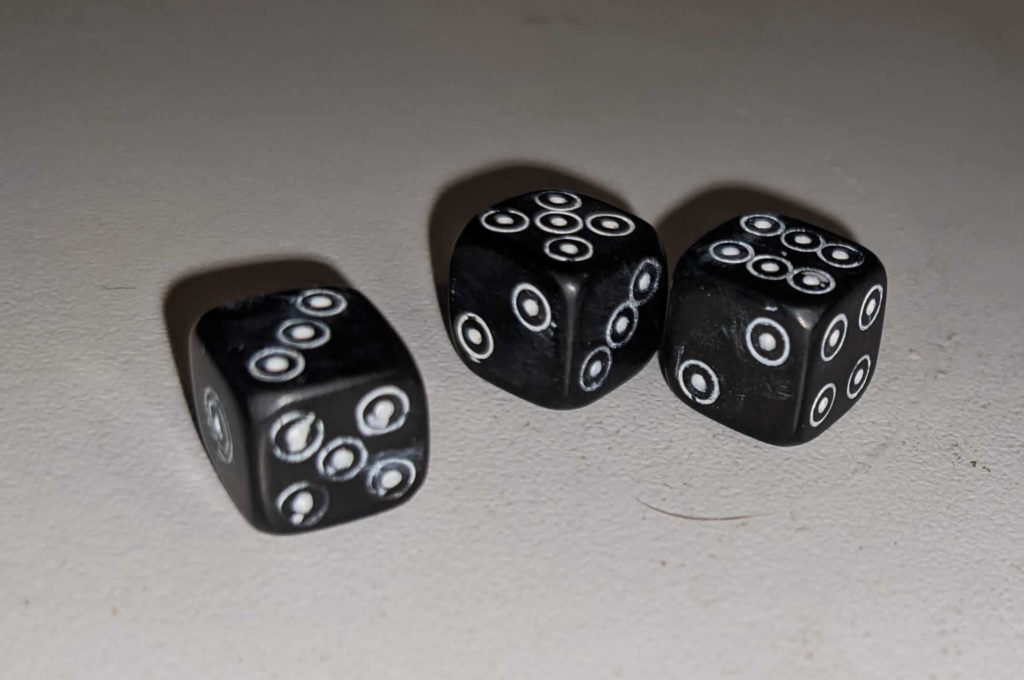
You can read more about medieval games of tabula here.